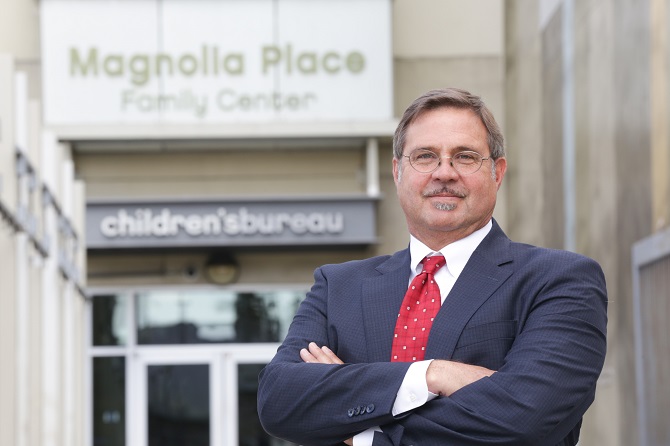Across the nation a report of child abuse is made every 10 seconds…in the State of California a report is made every minute. In the United States, five children die every day from abuse and neglect.
For over 100 years Children’s Bureau has been a diligent advocate for vulnerable children. We have worked at policy change by advocating for child labor laws and we have provided direct and supportive services by being on the forefront of professional foster care efforts. While we will always provide these supportive services, at what point do we as an organization, if not we as a society, say enough is enough? This is not a rhetorical question since we have to go on providing direct services to these most vulnerable citizens of our society, but we can and should think more deeply about and work to create an environment where their abuse, maltreatment, and neglect simply does not occur.
Practically speaking, the cost of this abuse and neglect are a huge societal burden. There is substantial value in investing in early years as the problems and their impact cost significantly more later in life. Studies have shown that every dollar spent to prevent abuse saves between $8 and $18 downstream, from the costs of child welfare, the court and incarceration system, addiction, truancy, and the health system. A recently released study conservatively indicates that the lifetime societal costs of EACH maltreatment survivor are more than $268,000. With over 71,000 survivors, this means that the estimated lifetime burden to California and its communities is more than $19 billion…and this is only for the cases that have been substantiated.
In addition, because of advances in neurological science, we now know that these adverse childhood experiences have a much more far-reaching impact than we ever imagined. In fact, studies have shown that these experiences damage the ends of DNA strands of the impacted child, changing their brain chemistry and setting them on a trajectory for which no one would wish. These children experience a higher level of learning disabilities, more chronic health problems, higher rates of substance abuse, riskier behaviors that, many times, lead to juvenile incarceration and, ultimately, higher rates of unemployment.
So what can we do? We can focus on Primary Prevention – strategies directed to the general population that strengthen community and families BEFORE maltreatment occurs. Think of immunization instead of treatment of disease.

To accomplish this, we need to move beyond the concepts of child welfare to child well-being.
We must work together if we are truly addressing the well-being of children and help them reach their full potential. Children develop within a network of family relationships and families exist within a community, and this community is surrounded by the larger society. The interaction between children, families, and their community influence one another and will either increase or decrease positive outcomes for these children. As a result, if we want to improve child well-being we must acknowledge the impact of family well-being and, therefore, community well-being.
Activating all sectors of community, including business and government, is critical. The overall consequence of child maltreatment – poverty, crime, violence, incarceration, addiction, teen pregnancy, truancy, chronic health issues, and homelessness – are estimated annually at more than $80 billion in the United States. Our efforts to “rescue” children post maltreatment is simply not effective or sustainable. The solution lies in investing in families – in their capacity to care for and nurture their children. Our communities, in all their definitions, have the best chance of helping families and responding to their needs. Healthy children living in healthy families produce healthy communities.
What is an acceptable failure rate for children and for families? Is a 1% failure rate okay? We know better. Now we have to do better.
Dr. Ronald E. Brown is President & CEO of Children’s Bureau, a nonprofit leader in the prevention and treatment of child abuse and neglect, where he oversees all aspects of the $46 million agency that serves 40,000 at-risk children and parents in 20 community sites throughout Los Angeles and Orange County.
References
Collier, P., Reid, L., Chait V., & Albright, K. (2019). The economics of child abuse: A Study of California. Retrieved from safeandsound.org/CA-Cost
Gelles, R.J., & Perlman, S. (2012). Estimated annual cost of child abuse and neglect. Retrieved from preventchildabuse.org/images/research/pcaa_cost_report_2012_gelles_perlman.pdf.

